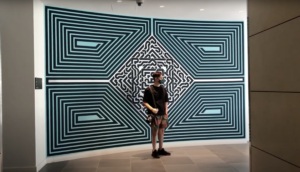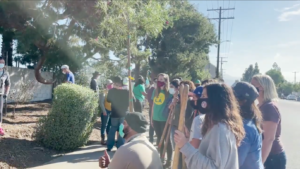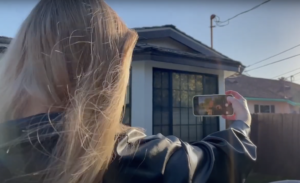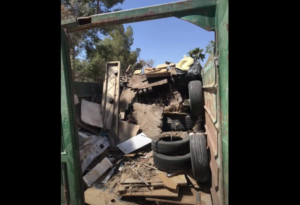Many California colleges dropped the SAT from its admissions process. What will that mean?
For years, high school students have had to take standardized tests to attend the college of their dreams.
That may be changing. Many U.S. colleges and universities — including some of California’s biggest institutions — are no longer requiring the the SAT or ACT as part of their admissions process.
The National Center for Fair and Open Testing said 1,800 schools have dropped SAT or ACT requirements. In December 2021, California State University system leaders strongly signaled they plan to eliminate the SAT score requirements, EdSource reported
The move follows a similar decision by the University of California System. UC campuses have already permanently dropped standardized tests from their admissions formula. Even some notoriously hard-to-get-into Ivy League schools, like Harvard and Cornell, are shifting to a test-optional application process.
The SAT, or Scholastic Aptitude Test, has been the primary collegiate gatekeeper since its creation over 90 years ago by Carl Brigham from the American college admissions organization, College Board. Its counterpart, the ACT (American College Test) is shorter in length but just as stress-inducing for teenagers.
When she found out about colleges no longer requiring the SAT, Denise Pinales, a junior at L.A. ‘s John F. Kennedy High School felt a sense of relief.
“Now I know that my college acceptance won’t be factored on a test that I may have screwed up on,” she said, “especially with COVID and missing two weeks of school.”
The recent social upheaval caused by the COVID-19 pandemic has prompted colleges across the country to reevaluate many aspects of how they conduct classes, tests, and now admissions.
Removing the SAT/ACT requirement will help students have a better chance to enroll in college.
UCLA Vice Provost for Enrollment Youlonda Copeland-Morgan said the suspension of SAT/ACT requirement will give more underprivileged high school students a chance to attend four-year universities directly after graduation.
The SAT was originally designed to test the aptitude of soldiers in World War I. After witnessing the effects and results, social scientists believed it would be a good psychological test to add to the slew of standardized testing in schools.
According to the National Education Association, the SAT was not designed to test students on things they already learned in school or common, learned knowledge. It was set up to cover several topics and challenge a student’s natural ability to memorize a wide range of material – any of which can be covered over the course of three hours.
Critics have stated that SAT and ACT mainly prove that kids from poor families do worse than kids with more money. Wealthy parents can provide benefits that many poor families can’t, including tutors, test prep services and schools with ample resources.
“It is more affluent people in this country that can afford expensive test prep,” said Audrey Dow, from the Campaign for College Opportunity – an organization that seeks to make public policy change in California colleges – “the type of test prep that is really focused again, on test taking strategies.”
David Dufault-Hunter, CSUN’s Associate VP for Enrollment Services commented on the shift in enrollment demographics that was almost immediately evident when CSUN stopped looking at SAT scores. Instead, they looked at GPAs, whether students completed “A-G” courses — the classes California’s public colleges require for admission — and outside factors such as employment status during school and poverty.
Under these new criteria, Dufault-Hunter said, African-American students gained admission to CSUN at a slightly higher rate.
Ibram X. Kendi, an expert from Boston University’s Anti Racist Research and Policy Center says that the SATs play a big part in, “degrade[ing] Black and Brown minds and legally exclud[ing] their bodies from prestigious schools.”
“When institutions started to use the SAT… ” Dufault-Hunter said, “they [used] it as a measuring stick for their own reputation and we lost the fundamental reason for education and that is to build and develop talent as opposed to simply identify talent.”
Although the standardized test taking requirement is being eliminated, some experts worry about the unintended consequences.
They fear getting rid of the SAT or ACT will put more pressure on high school students to take Advanced Placement courses and exams so credits can be submitted in time for college admission decisions. According to Virginia Commonwealth University, removing the SAT and ACT as a requirement for admission forces colleges to focus on students’ high school GPA, which can paint a misleading picture; Absences, family problems or moves between schools can skew a student’s GPA. This means students will have to work even harder to maintain a high GPA.
Luis Osuna, a recent graduate from CSUN, spent a lot of his high school years overworked and stressed about the SATs and ACT rather than his actual grades. As a result, his GPA slipped and he never ended up sitting for the ACT.
“When you start eliminating that grind of standardized testing and the ways that very much add a lot of pressure,” Osuna said, “I think it would have opened up a lot of different, healthier practices to approach my education.”
He is in favor of fundamentally changing the application process for college and tailoring education based on people’s individuality.
While the SAT has not been permanently suspended across the country, Rob Franek from the college admissions service, The Princeton Review, thinks the College Board is moving the test in a positive direction.
“They are trying, again, to right some of those ills of the past,” Franek said, “making the test shorter— almost an hour shorter.”
“There are things,” Franek added, “that the SAT will continually evolve… become much more modern, nimble and then accessible to students across the board.”
Dufault-Hunter believes the suspension of required SAT scores will be a permanent part of the Cal State admissions process, opening doors and opportunities to students who are talented, underrepresented, or just not good test-takers under pressure.
This story was reported and produced by Gitanjali Mahapatra, Debbie Martinez and Tracy Mejia.







